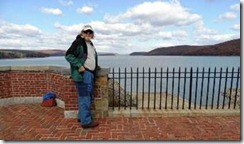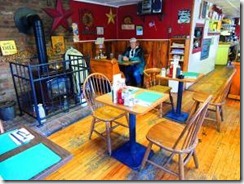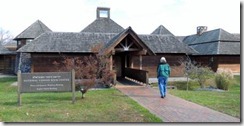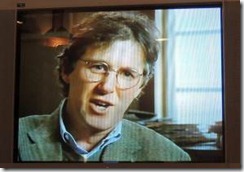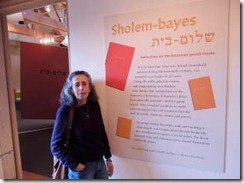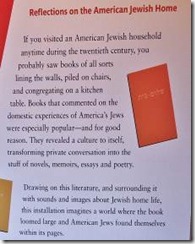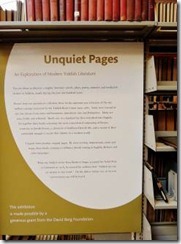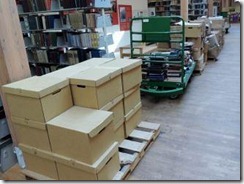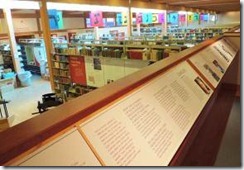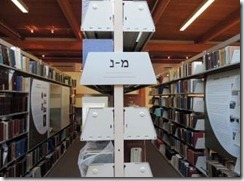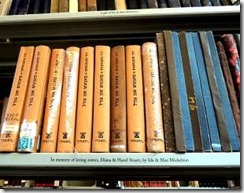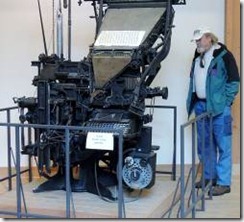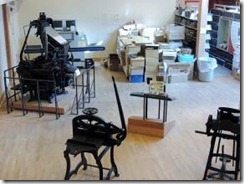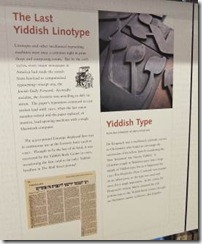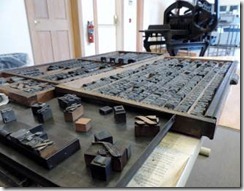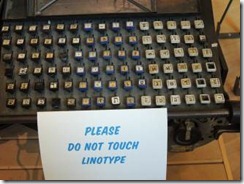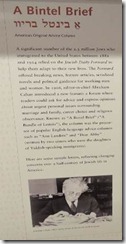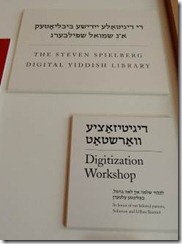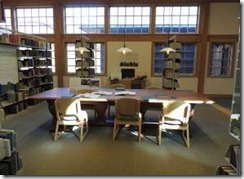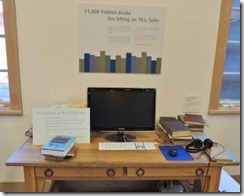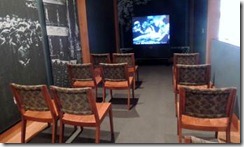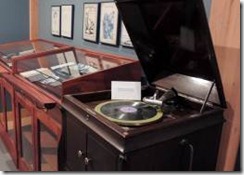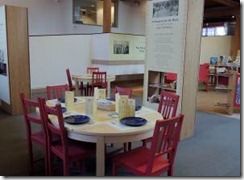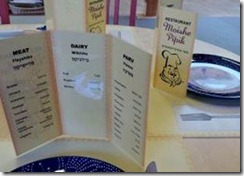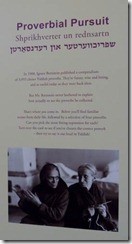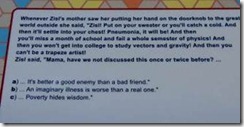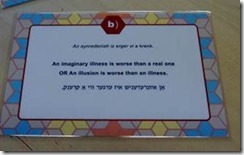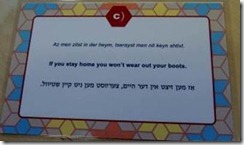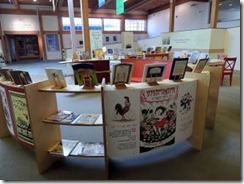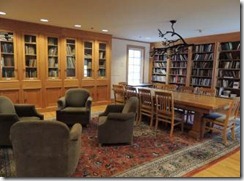Hi Y’all,
Looks like Randal and I left not only eastern Massachusetts just in the nick of time, but also the Washington DC area where we stopped for 2 days to visit folks. We certainly are thinking about our pals there and our friend Carol who lives in New Jersey just where Sandy is looking to hit! I checked the New Bedford paper’s website and read that the Hurricane Barrier that we visited would close the gates today. Hope they do everything they need to do. As for the story about the HMS Bounty that was lost at sea, Randal and I visited it while it was being refurbished in Boothbay Harbor, Maine several years ago. I only hope that they find the two crew who are still missing. Being on land for a storm is really bad; being on a boat is freakin awful!
Ru
When we left New Bedford, we decided to head north-west to drive the Mass Pike stopping at Quabbin Reservoir where I’d never been and maybe Amherst where I’d spent 4 years at the University of Massachusetts. The Yiddish Book Center, Emily Dickinson’s home and the Eric Carle Museum are all located in the area. I haven’t been back to Amherst or UMass for at least 35 years. Well, I still haven’t been back to Amherst town or UMass. We didn’t make it to the Eric Carle Museum or Emily Dickinson’s house. (So Beth that’s why we didn’t call, we really just zipped on through.) I think we were really feeling the need to get back to Roanoke. We did make a 10 minute stop at Quabbin Reservoir where the visitor center was pretty well closed to anyone other than the 50 or so school kids there for a special program. It was noon; we were hungry; so visited the restrooms, took a photo, and headed off for lunch.
Randal at Quabbin
“The Quabbin Reservoir, located in central Massachusetts, was built in the 1930’s to provide clean drinking water for the Boston region. Over 2500 people in the towns of Dana, Enfield, Greenwich, Prescott, and parts of seven other towns, were forced to give up their homes in the Swift River Valley to make this project possible. Today, Quabbin is recognized as one of the largest drinking-water reservoirs in the world, a remarkable feat of engineering, an "accidental wilderness" that is home to an impressive variety of wildlife, and a place that brings bittersweet memories to many who once lived here.”
Friends of Quabbin, Inc. • 485 Ware Road • Belchertown, MA 01007
(413) 323-7221, E-mail: email Friends of Quabbin
Copyright � 2005 Friends of Quabbin, Inc. http://www.foquabbin.org/
We drove from Quabbin heading towards the campus of Hampshire College where the Yiddish Book Center is located. (The Eric Carle Museum is located nearby, but it is closed on Mondays and this was a Monday.) We passed a cute little Café so turned around and went back. We like to eat local rather than chains when possible; way more fun.
The Roadhouse Café http://www.roadhousecafe.net/
We both ate the Tuscan Sandwich which was cheese and veggies on their homemade sundried tomato bread. If you’re on the road between Quabbin and Amherst it’s on the right just before you turn left towards Amherst. 176 Federal St. Belchertown, MA
We let Gertrude Bell, our GPS, lead us to Hampshire College but then I had to figure out where the Center was as the signage didn’t make it so obvious. If you go, turn into the campus and make your first left and follow the road a bit and there it is.
What is Yiddish?
“Yiddish was the vernacular language of most Jews in Eastern and Central Europe before World War II. Today, it is spoken by descendants of those Jews living in the United States, Israel, and other parts of the world.
The basic grammar and vocabulary of Yiddish, which is written in the Hebrew alphabet, is Germanic. Yiddish, however, is not a dialect of German but a complete language—one of a family of Western Germanic languages, that includes English, Dutch, and Afrikaans. Yiddish words often have meanings that are different from similar words in German.
The term "Yiddish" is derived from the German word for "Jewish." The most accepted (but not the only) theory of the origin of Yiddish is that it began to take shape by the 10th century as Jews from France and Italy migrated to the German Rhine Valley. They developed a language that included elements of Hebrew, Jewish-French, Jewish-Italian, and various German dialects. In the late Middle Ages, when Jews settled in Eastern Europe, Slavic elements were incorporated into Yiddish.”
http://www.yivoinstitute.org/archive/yiddish/yiddish_fr.htm
40 Yiddish words you might already know!
http://www.dailywritingtips.com/the-yiddish-handbook-40-words-you-should-know/ I recognized most of these words because they have become part of our everyday “American” language.
Yiddish Book Center
The Center is housed in a building designed to look like a 19th-century shtetl, a cluster of wooden buildings surrounding a synagogue.
“The Yiddish Book Center is a non-profit organization working to tell the whole Jewish story by rescuing, translating and disseminating Yiddish books and presenting innovative educational programs that broaden understanding of modern Jewish identity. Saving a million Yiddish books was just the beginning. Our priority now is to advance knowledge of the content and literary and cultural progeny of the books we’ve saved. We offer fellowships and courses for high school students, college students and adults. We translate Yiddish literature into English. We record oral histories and contemporary stories.
After three decades, we’ve emerged as one of the world’s largest, liveliest and most original Jewish organizations. Read our story http://www.yiddishbookcenter.org/our-story and watch
A Bridge of Books, a brief documentary about the Center’s work.”
I don’t know when I first learned about the Yiddish Book Center, but it was shortly after the 2004 publication of Outwitting History written by Aaron Lansky the founder of the Center. Aaron grew up in New Bedford and my mom had taught him in Sunday School. Their relationship was, let us say, interesting. After reading the book I sent a donation in her name. Now maybe she would call him a “mentsh”.
Aaron Lansky
“Yiddish didn’t die a natural death,” he asserted. Yiddish culture and literature has been systematically destroyed by the Holocaust, which took the lives of half the population of Yiddish speaking people; Soviet purges and persecution; Zionist attempts to suppress the language and diasporic culture; and pressures of American assimilationism.
He insists that there is no divide between literature and culture of the Jewish people. “Literature is what’s left of the culture,” he said. “They didn’t have a country, so books became sort of a cultural homeland for Jews.” If you save the books, you simultaneously save the history of which they are born.”
http://www.hampshire.edu/news/Alumni-Profile-Yiddish-Book-Centers-Aaron-Lansky-73F.htm
Jewish homes typically had books piled up everywhere which sounds much like our car and our boat!
Randal and I stopped at about a dozen used book stores and never walked away empty handed, well just once. Our car was filled with bags of them. Now we’ll have to fill our suitcases and then add them to the collection that is already overflowing in our boat. One day many will find a home in the Netsel Marina library. Kindles are great, but they just can’t compete with browsing around a used bookstore.
I like the phrase “Unquiet Pages.” Boxes of books waiting to be processed.
There are books stored everywhere, some in storage buildings and some in university libraries around the world. Many are being digitized so they can be shared more easily and preserved in a non-paper format.
The story of the Center told in the display that overlooks the bookshelves. Yiddish uses the Hebrew alphabet.
Almost every shelf has a dedication.
Yiddish Printing Presses
The original “Dear Abbey.”
The newspaper, The Jewish Daily Forward, was popular with new Jewish immigrants to America. One of its columns was “Bintel Brief” (Bundle of Letters) an advice column for new Jewish immigrants. The new immigrants, unfamiliar with “American ways” would write to and read the advice just as people today read “Dear Abby” and similar columns.
Steven Spielberg Digital Yiddish Library
I think Spielberg should think about making a movie about the Center’s creation as the short documentary was really very entertaining and it’s a great “feel good” story.
The reading area set up in the manner of a traditional study table and now the electronic version.
You can watch old Yiddish language movies and listen to old Yiddish music.
This display illustrates how Yiddish words were, and still are used at the dinner table.
These answers make you shake your head almost as much as the answers during the Presidential debates!
The children’s area.
The Center Library
Some interesting articles related to the Yiddish Book Center concerning copyright issues and what direction the Center should take at this stage of its development.

